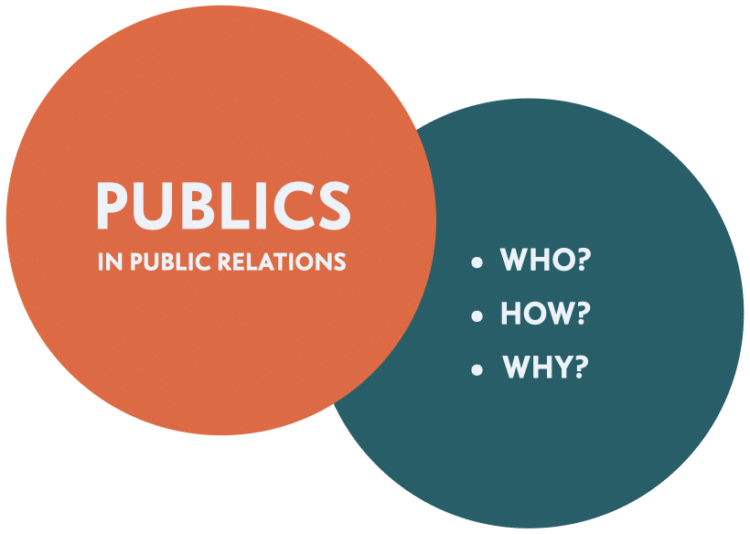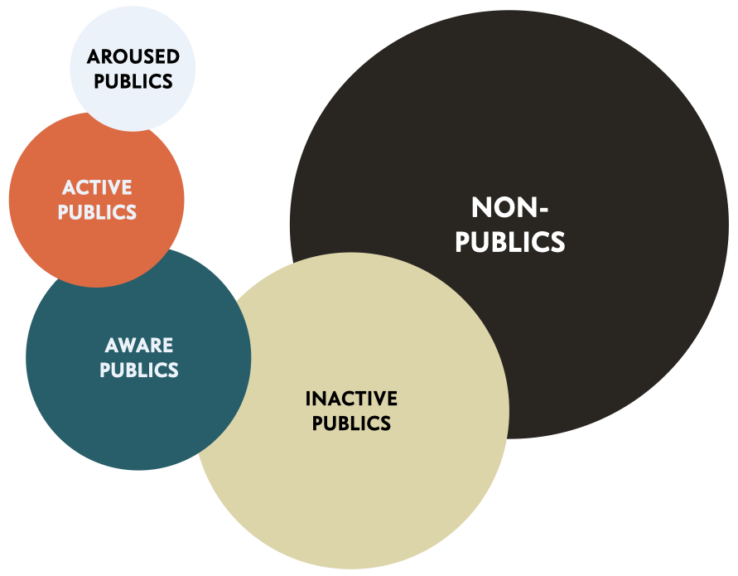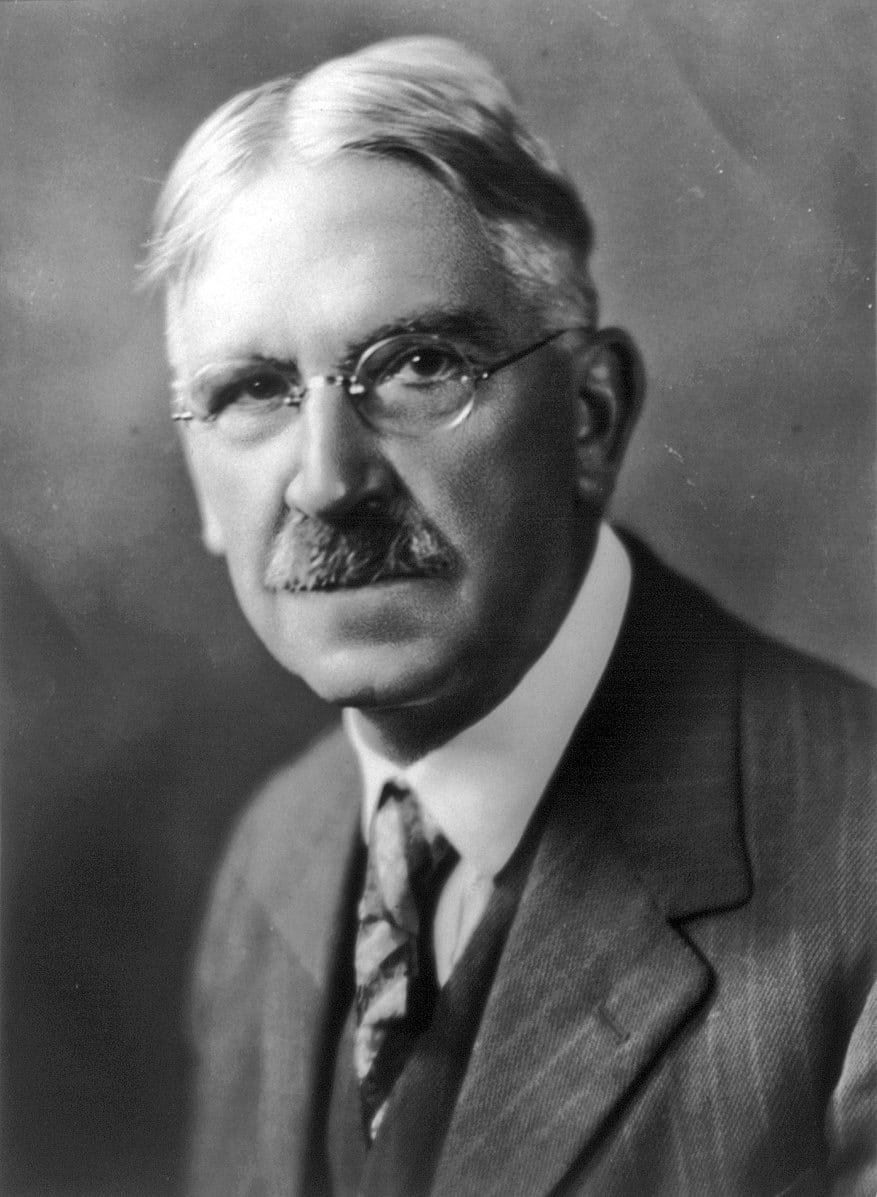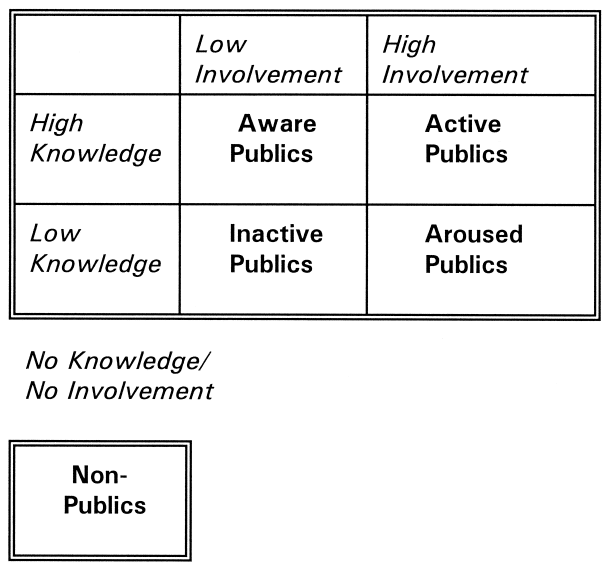Professor Kirk Hallahan suggests five types of publics.
There are aware publics, active publics, inactive publics, aroused publics, and non-publics.
Non-publics lack any meaningful connection with the issue, but inactive publics are the most underrated type of public as they still can become aware, active, or aroused.
Here goes:
The Publics in Public Relations

Spin Academy | Online PR Courses
The Publics in Public Relations
Here’s how to define publics in public relations:
Publics = a psychographic segment (who) with similar communication behaviours (how) formed around a specific issue (why) affecting the organisation (to whom). 1Silfwer, J. (2015, June 11). The Publics in Public Relations. Doctor Spin | The PR Blog. https://doctorspin.net/publics-in-public-relations/
Please note:
Psychographic segment = similarities in cognitive driving factors such as reasoning, motivations, attitudes, etc.
Communication behaviours = how the public’s opinion is expressed (choice of message, rhetorical framing, and medium type).
Specific issue = determined situationally by a specific social object, often high on the agenda in news media or social media.
Learn more: The Publics in Public Relations
💡 Subscribe and get a free ebook on how to get better PR ideas.

Kirk Hallahan: Five Types of Publics

Spin Academy | Online PR Courses
Kirk Hallahan’s Five Types of Publics
There are plenty of inactive publics around us in society, just “waiting” for external situations to activate them, bringing them together in coöperative, communicative behaviours.
However, PR tends to focus on the already activated publics:
“By focusing on activism and its consequences, recent public relations theory has largely ignored inactive publics, that is, stakeholder groups that demonstrate low levels of knowledge and involvement in the organisation or its products, services, candidates, or causes, but are important to an organisation.”
Source: Public Relations Review 2Hallahan, K. (2000). Inactive publics: The forgotten publics in public relations. Public Relations Review, 26(4), 499 – 515. https://doi.org/10.1016/S0363-8111(00)00061 – 8
Kirk Hallahan, Professor Emeritus, Journalism and Media Communication, Colorado State University, proposes five types of publics based on their knowledge and involvement: 3Hallahan, K. (2000). Inactive publics: The forgotten publics in public relations. Public Relations Review, 26(4), 499 – 515. https://doi.org/10.1016/S0363-8111(00)00061 – 8
Hallahan suggests a model based on knowledge and involvement:
As an organisation targeted by activists, what would be the best issue response? Hallahan proposes four principal response strategies: 4Hallahan, K. (2009, November 19). The Dynamics of Issues Activation and Response: An Issues Processes Model. Journal of Public Relations Research. … Continue reading
Learn more: Kirk Hallahan’s Five Types of Publics
💡 Subscribe and get a free ebook on how to get better PR ideas.


Thanks for reading. Please support my blog by sharing articles with other communications and marketing professionals. You might also consider my PR services or speaking engagements.
PR Resource: John Dewey and the “P” in Public Relations

Spin Academy | Online PR Courses
John Dewey and the ‘P’ in Public Relations
The term “publics” can be traced back to the work of the American psychologist and philosopher John Dewey (1859 – 1952). 5John Dewey. (2023, March 25). In Wikipedia. https://en.wikipedia.org/wiki/John_Dewey
In his 1927 book, “The Public and Its Problems,” Dewey conceptualised publics as situational groups formed in response to shared concerns or issues. He posited that these groups emerge when individuals confront a common problem, recognise its existence, and take collective action to address it. 6Dewey, J. (1927). The Public and Its Problems. Athens, Ohio: Swallow Press.
“Dewey’s theory of the public sphere recognizes multiple publics and permeable borders between public and private, with communication playing a crucial role in public formation and re-formation.”
Source: Argumentation and Advocacy 7Asen, R. (2003). The Multiple Mr. Dewey: Multiple Publics and Permeable Borders in John Dewey’s Theory of the Public Sphere. Argumentation and Advocacy, 39, 174 — 188. … Continue reading
Dewey’s formulation of publics marked a significant departure from the traditional understanding of the “mass public,” which assumed a more homogeneous and passive audience.
By highlighting the situational and dynamic nature of publics, Dewey laid the foundation for a more nuanced and adaptive approach to understanding the complex interactions between organisations and their various audiences.
This understanding of publics as situational and ever-changing highlighted the need for organisations to remain agile and adaptive in their communication efforts.
By recognising the diverse and situational nature of publics, PR professionals and communicators can better understand the needs and concerns of their various audiences, allowing them to develop more effective communication strategies.
“This recognition of the active and dynamic nature of publics has also influenced broader academic and public discourse, highlighting the importance of understanding and engaging with different groups of people who share common interests, concerns, or problems.”
Source: Contemporary Pragmatism 8Rogers, M. (2010). Introduction: Revisiting The Public and Its Problems. Contemporary Pragmatism, 7, 1 – 7. https://doi.org/10.1163/18758185 – 90000152
Learn more: John Dewey and the ‘P’ in Public Relations
💡 Subscribe and get a free ebook on how to get better PR ideas.

ANNOTATIONS
| 1 | Silfwer, J. (2015, June 11). The Publics in Public Relations. Doctor Spin | The PR Blog. https://doctorspin.net/publics-in-public-relations/ |
|---|---|
| 2, 3 | Hallahan, K. (2000). Inactive publics: The forgotten publics in public relations. Public Relations Review, 26(4), 499 – 515. https://doi.org/10.1016/S0363-8111(00)00061 – 8 |
| 4 | Hallahan, K. (2009, November 19). The Dynamics of Issues Activation and Response: An Issues Processes Model. Journal of Public Relations Research. https://www.tandfonline.com/doi/abs/10.1207/S1532754XJPRR1301_3 |
| 5 | John Dewey. (2023, March 25). In Wikipedia. https://en.wikipedia.org/wiki/John_Dewey |
| 6 | Dewey, J. (1927). The Public and Its Problems. Athens, Ohio: Swallow Press. |
| 7 | Asen, R. (2003). The Multiple Mr. Dewey: Multiple Publics and Permeable Borders in John Dewey’s Theory of the Public Sphere. Argumentation and Advocacy, 39, 174 — 188. https://doi.org/10.1080/00028533.2003.11821585 |
| 8 | Rogers, M. (2010). Introduction: Revisiting The Public and Its Problems. Contemporary Pragmatism, 7, 1 – 7. https://doi.org/10.1163/18758185 – 90000152 |




